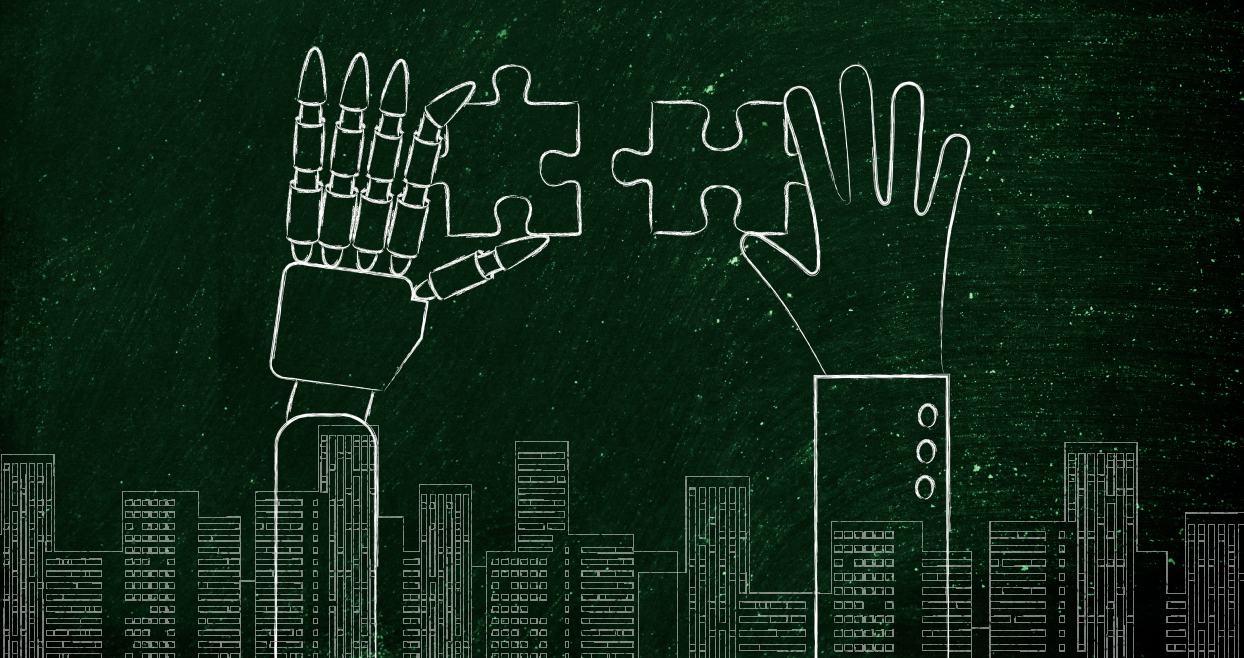How do we learn?

A simple question, a complex answer. We, as humans, have been learning since day one, but how we actually do so seems automatic, as if rather than thinking about how to walk, we simply do it. In a career packed with scientific intrigue, Dr. Filip Ponulak has dedicated his life to learning about how living organisms capture and process information from the world around them, and applying that understanding to machines so they, too, can become capable of learning. For the past 15 years, Ponulak has taken the techniques of computational neuroscience used to study organisms, including people and animals, and contemplated how to replicate those systems in machine-learning algorithms.
Among Ponulak’s conclusions: Today’s smart buildings have much to learn from living systems in order to improve operations and whole facility health.
Ponulak recently joined smart building software developer Site 1001 as its Principal Data Scientist. A spin-off of Kansas City, MO-based general contractor J.E. Dunn Construction Co., Site 1001 uses sensor data, facilities information, and artificial intelligence (AI) to create meaningful data for its smart building operations, maintenance, and management software platform. The platform can reduce operational costs by early detection and alert of system anomalies.

Ponulak’s expertise in machine learning, data science, and AI will assist Site 1001 in the build-out of its platform. Using machine learning to “listen” to various building systems and automate interactions between building components, the enterprise will move toward predicting maintenance needs.
“When we look at buildings as living structures, we can understand how various systems are connected and operate together,” Ponulak said. “This new way of looking at buildings can explain how the age, usage, and maintenance of one component can impact other components of both the same and different systems. Buildings won’t run perfectly, but they can run better than they currently are.”
To learn more about this idea, BuiltWorlds sat down with Ponulak for a more in-depth discussion…
What is your experience with computational neuroscience? Also, how do you decipher an animal’s brain and nervous systems and replicate those systems in buildings?
“The human brain has fascinated me for a long time; it is amazingly complex yet incredibly efficient. Our brains are continually recording our experiences and using this learned knowledge to decide how we behave the next time we’re in a similar situation.
The brain is able to process information coming from thousands of sensors. For example, the visual system can recognize and categorize complex objects within fractions of milliseconds while using much less energy than computers do. I’ve explored how the brain processes information, allows us to learn and remember, and precisely controls our body and behavior; I want to take this knowledge and create more intelligent devices and systems.”

For Site 1001, are you referring to building systems and their components?
“Yes. Going back to our living or biological analogy, a building can be compared easily to our own body and working systems. The human respiratory system can be compared to a HVAC system, including the filters that ensure healthy air quality, or a building’s electrical system can be compared to a body’s circulatory system which supplies energy to the body. Our musculoskeletal system supports and protects what’s within our body, much like a building’s structural system. There are other analogies, too.
What’s really exciting is when intelligent communication within buildings acts similarly to a biological nervous system. When a building is connected to original construction and design documents, real time sensor data, and AI, the building has a “brain” that uses past data and current information to make sure all systems are working as they’re designed to.”
What are the key takeaways in terms of what we know about animal brains and nervous systems that can be applied to building systems and components?
“There are two main takeaways. The first: We should be using predictive control rather than simple reactive control in intelligent buildings, very much like our brains do with the human body. Simply put, predictive control is selecting the best decision in anticipation of an occurrence, as opposed to reactive control, when an action is taken after the occurrence or, in this case, failure. Rather than wait for a component to fail, Site 1001 wants to use data to predict the chances of a failure within a certain time frame and then schedule the necessary maintenance to avoid the failure.
The second: Use the same principles of data integration as our brains do. By thinking of buildings as living beings, we can improve communication among various systems, thereby increasing interoperability and data quality. This could mean integrating sensor data on temperature with motion data from wearable devices to customize aspects of the building’s environment such as room temperature, lighting, and more to the needs of individual building occupants. But, again, that’s just one example. There are many more.”
You mentioned that the body’s central nervous system, especially the brain, is constantly recalling past and learned experiences to improve how we react to new stimuli and events. This seems pretty smart. Does this relate to buildings?
“Absolutely. The brain acts as you’ve described to make our interactions with the world safer and more efficient. Going back to predictive versus reactive, think about what you would do if you saw an oncoming vehicle crossing into your lane. You’d probably turn the wheel in anticipation of a possible collision while the distance between your car and the other car is still safe, which is predictive control. Reactive control would leave you waiting to turn the wheel until the collision.
Site 1001 wants to use data and intelligent solutions to create a win-win situation for everyone, including the building itself. By bringing together data from multiple places and recognizing connections and correlations between them, we can listen to a building better than ever. Whole building health will not only keep buildings operational and smart, but predictive thinking will avoid high costs associated with damage or system failure.”


Discussion
Be the first to leave a comment.
You must be a member of the BuiltWorlds community to join the discussion.